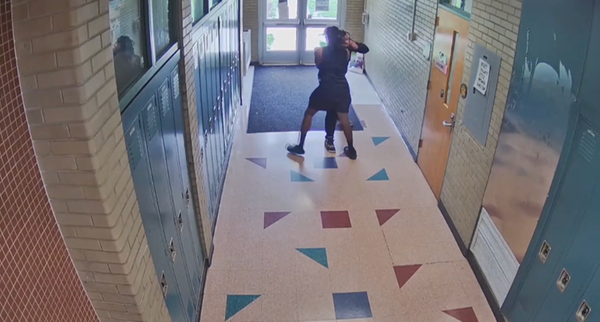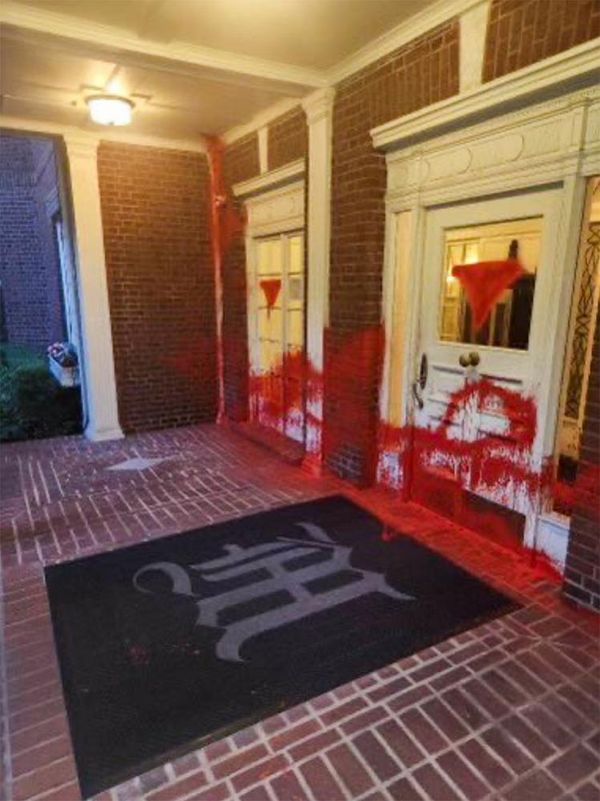
When news broke that Qantas would “scrap its gender-based uniform guidelines” as it “ditches heels, endorses make-up for all staff”, it seemed the national airline was finally embracing its employees’ diverse identities.
Female Qantas staff can now wear flat-heeled shoes and boots. Other grooming choices such as make-up and long hair are optional for all, rather than being arbitrarily required or disallowed for particular genders.
But although current uniforms will no longer be categorised as “male” or “female”, flight attendants, pilots and ground staff will still be required to dress within role-specific “capsules”. “Don’t expect to see male cabin crew with a full face of make-up on a plane,” said Teri O’Toole, national secretary of the Flight Attendants Association of Australia.
Airline uniforms represent a rat king of competing principles. They’re practical workwear for a physically demanding job; they transform workers into billboards for airline brands; they communicate soft professional power to earn passengers’ trust and respect. They even represent national character. Perhaps only Olympic team uniforms are more criticised.
And then airline uniforms must avoid workplace discrimination and accommodate individuals’ bodily autonomy.
The first female flight attendant, Ellen Church, was an Iowa nurse who in 1930 convinced United Airlines that as onboard attendants, nurses could allay public fears about air safety. Her uniform had a nurse-style cape, which remains a cabin-crew sartorial trope.
Other flight-attendant styles represent vestiges of the professions that historically built civil aviation. The near-ubiquitous silk scarves originated among World War I aviators to protect their necks in open cockpits. Epaulettes, jaunty little garrison caps and even the “jungle green” uniforms Qantas staff wore from 1959-64 lend airline staff military authority. (Indeed, military and police forces worldwide are also implementing dress-code reform.)
But compared with recent changes at Air New Zealand, Virgin Atlantic, Alaska Airlines and United Airlines, the Qantas reforms are modest. Staff must still cover tattoos, and stockings must be worn with skirts.
Meanwhile, Icelandic budget line PLAY allows T-shirts and sneakers for everyone, as does Ukrainian charter line SkyUp and South Korea’s newest carrier, Aero K. Low-cost startup Bonza is the first Australian airline to offer entirely gender-neutral mix-and-match uniforms.
A “progressive” uniform policy is clearly an easy way to market a new brand as innovative. But before the air industry was deregulated, airlines competed for (mainly male) business travellers by promising young, attractive, unmarried women as flight attendants.
In 1967, a 22-year-old Ansett–ANA flight attendant became her employer’s unwitting point of difference in a J Walter Thompson ad campaign: “How can both airlines be the same? We’ve got Susan Jones.”
In her 2017 book Smile, Particularly in Bad Weather, Prudence Black details blatantly sexualised mid-century airline uniforms: hot pants and go-go boots; kimonos on the Australia-Japan route; gold lamé cocktail frocks on the 10pm Melbourne-Sydney flight so businessmen “could relax four miles high”.
The 1960s mod-influenced uniforms from designers including Jean Louis, Pierre Balmain and Emilio Pucci frequently favoured gimmicks over practicality. BOAC’s paper dresses disintegrated when wet — and drunken passengers tried to set them alight with their cigarettes.
Meanwhile, ads for Braniff International Airways promised an “air strip”: its quirky new Pucci uniforms had multiple layers for staff to remove progressively throughout the flight.
The utilitarian, businesslike uniforms of the 1980s and ’90s reflect that cabin crew were pushing back on discriminatory airline practices. Established in 1957, the Airline Hostesses’ Association was Australia’s first all-female union; when Sir Reg Ansett dismissed its executive in 1975 as a “batch of old boilers”, the union called a snap two-day strike.
The Australian Services Union pushed for the Qantas changes last year, arguing that flat shoes are a basic occupational health and safety issue for workers who average 20,000 steps a day. And why should some, but not all, incur extra grooming costs?
Gender isn’t the only workplace discrimination that uniform changes can remediate; the protective cornrow hairstyles now allowed at Qantas are also more culturally inclusive. British Airways got a lot of press in January for offering gender-neutral jumpsuits among its redesigned uniforms, but the options also included tunics and hijabs.
However, Singapore Airlines will probably never revise one of the industry’s strictest staff dress codes, because its brand relies so heavily on the “Singapore girl” in her Pierre Balmain-designed sarong kebaya — a campaign originated in 1972 by Australian adman Ian Batey. Despite criticism that the Singapore girl is sexist and Orientalist, The Straits Times once remarked that to abolish it “is like removing Mickey Mouse from Disneyland”.
Is there pleasure and pride in embodying an icon? Flight attendants’ social media posts revel in the lifestyle the Qantas uniform symbolises. When Martin Grant was designing it, staff members told him “they wanted glamour back in air travel. They ask for hats and gloves…”
And interestingly, the airline I’ve noticed most often in TikTok’s popular “get ready with me” video genre is one of the most conservatively dressed: Emirates. Not only do its staff love putting on their red lipstick and folding their hat scarves just so, but viewers do too. Their comments echo with urgent longing: “My dream job! How do I apply?”







